The text below is a translation from a feature that first appeared in Happinez magazine. If you’d rather read it in its original Dutch, you can download a PDF copy here, or read it on Roxane’s blog here.
Please note that this article first appeared in 2012 so some Process details may have changed – we don’t have an eight-day course any more! – but we’ve chosen to keep those details unedited in our translation to try and stay as faithful as possible to the original .
Detox for the soul
Change your behaviour, change your life. Freelance journalist Roxane Catz took the plunge and did the Hoffman Process, an intensive journey of ‘blood, sweat and tears’ (some from laughter) with illuminating results.
Just when I’d decided not to do any more workshops, courses or training for a while (because how many paths to enlightenment can one person follow?) I was approached by a friend from shiatsu club who challenged my resolve. Enthusiastically, she told me about the Hoffman Process, an eight-day therapeutic course that had changed her life in incredibly positive ways. Formerly a top athlete, now director of a consultancy firm, she’s certainly not the ‘floaty’ type; I immediately understood that this was not your typical navel-gazing course.
Would I like to come to an introduction evening next week? ‘Ummm. OK. Yes please!’ I heard myself say. After all, a residential course – I hadn’t done one of those yet. Immediately, the strong nagging voice in my head leapt in, ‘But what did we just agree?’ Contradictory voices and stubborn patterns; I would understand much more about both later.
The following week I sat in her office, along with six Hoffman graduates (people who have already done the Hoffman Process), and a number of other interested people. Tim Laurence, director of Hoffman UK, a slender, friendly-looking man with a delightful British accent, was explaining what the Process entails.
‘This method is intended for people who genuinely want to change,’ he began. ‘We don’t behave the way we do for nothing. There are – mostly subconscious – reasons for what we do, otherwise we’d behave differently. But often it’s precisely those deeply-ingrained, locked-down habits that get in the way on our path of life.’
These patterns originate in our youth, he continued, through what founder Bob Hoffman called Negative Love Syndrome. From birth, a child needs food, shelter and protection to survive. Scientific research in Romanian orphanages has shown that love is essential when growing up, and a child will do everything it can to get love and attention. Children try to mimic the behaviour of their parents from an early age, to gain positive endorsement. Later – usually around puberty – rebellion comes into play too. Of course this all happens at a deeply subconscious level, but since both are in reaction to the behaviour of the parents, the child loses its own authenticity and develops (negative) patterns.
‘The key question now is how much of this do you want to shift? Are you willing to discover the origins of patterns that have a negative impact on your life and get to work with them?’ Tim emphasises that it takes courage to change your behaviour at a deep level and create a future that looks different from your past. In turn, some of the graduates share what made them decide to do the eight days and how it has positively changed their lives. Their stories touch me. All of these people radiate something peaceful, something pleasant.
What becomes clear to me is this; the Process changes your behaviour and (therefore) your life. I realise that, despite the fact that I have everything I need to consider myself a privileged and happy person – my health, a fantastic man, dear friends, great work – I often feel deeply indecisive and in low spirits, and I still have problems. I have a number of stubborn patterns that stand in my way. This story has come my way for a reason. Just do it, I conclude. Come on, one more time!
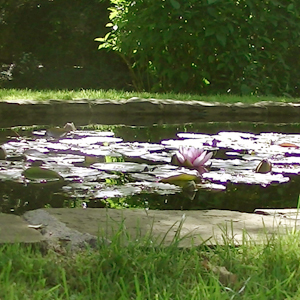 Time to stop running away
Time to stop running away
Florence House in Seaford, a charming country house set among rolling green hills near the white cliffs of the English South Coast, is the main UK venue for the Hoffman Process. On my way there, I have no idea what to expect. My pre-Process work, the homework on which I have worked intensively for more than two days, has already generated a swamp of emotions. It consisted of a whole series of checklists about the character traits of my father, my mother and myself. I also read a thirty-page introductory book about Hoffman. What I do know is that we will be in jogging pants all week (very flattering), that I have to share a room with someone (which I am not exactly looking forward to), that it will be an intense experience (understatement of the year), and that in order to fully experience the Process, alcohol, drugs, phone calls, reading, TV and sex are all forbidden in the coming days. But I don’t know anything else.
I arrive early in the afternoon. The rest of the participants trickle in during the day – eight men and seven women, ranging in age from their early twenties to somewhere around fifty. We exchange courtesies and observe each other. Who might become friends and who definitely won’t? After dinner (fantastic food by the way), I go to bed on time. I talk to my roommate – an older woman who clearly feels as uncomfortable with the situation as I do – and then fall asleep.
I wake up in the middle of the night in a panic. What am I doing here? What have I started? Why do I have to do this to myself? At that moment I would have paid triple the course fee to pack my bags and leave. But the next morning I am still there; after all, I have promised myself to accept it and to be brave.
The day starts with a personal conversation with our teacher. There are two, a man and a woman. I hope for the woman, but of course I get the man – Michael, a lean, agile type with a broad smile and an Italian accent. He has done his homework (in reading mine) and seems to have profiled me quite well. His conclusion? My biggest stumbling block is my uncertainty. Uncertain? Me? A minimiser perhaps, impatient, a procrastinator… but uncertain? I pull myself together; don’t overreact, Rox. Be open to everything you are offered here and just try to trust the teachers and the Process, otherwise it will be a waste of your time and money!
A letter to my mother
Who are you, why are you here and what do you expect of this week? I am shocked by some of the stories that my fellow group members tell during the first day. From abuse to suicide attempts – are my problems actually serious enough, I start to wonder? Everyone is very open and dares to show their vulnerable side, mainly due to the insightful questions asked by the facilitators; they don’t allow any room for keeping up a façade. After the session we are suddenly no longer strangers to each other; in a matter of hours, an almost palpable bond and mutual trust has emerged.
Later in the day, teacher Gaby takes us through a guided meditation. We focus on our body, our intellect, our emotional child, and our spiritual self, which Hoffman calls the Quadrinity model. We will continue to work and practice on this a lot over the next few days she says, because only once all those aspects of your self are balanced will you be in total harmony. I can only look forward to finding that harmony, because it’s something I have rarely (read ‘never’) experienced to date.
The next day is ‘Mother’s Day’. Before lunch, we’re instructed to take another good look at all the negative traits that our mothers may – unknowingly – have influenced us with. Then we have to write a letter of at least ten (!) sides of A4 to her, in which we must express all our anger towards her. An angry letter to my dear, deceased mother? I think it’s an impossible assignment. But I put my pen to paper and start writing. And I keep writing – for almost two hours without any hesitation. A long letter, with (here and there) an overflowing, almost illegible word, smudged by a single tear that has fallen onto the paper.
My mother, with whom I had a close relationship, was often depressed. As a child, I found her on the verge of death several times, numbed by alcohol and pills, which eventually proved fatal. In my letter, I write to her for the first time about what all this has done to me. How unsafe I often felt, how frightened it made me, so that I developed flight behaviour myself. I write it all down and feel how angry I am with her that she did not choose me, us, life. I feel relieved when I put down the pen, but Mother’s Day isn’t over, it turns out after lunch. Fifteen pillows lie on the floor of the workroom. In front of them, fifteen plastic baseball bats. No – this isn’t what I think it is?
All the resistance that I have managed to hold back up to now is coming to a head. Where’s the emergency exit? I don’t know if I should laugh, cry or leave, so I pull myself together and stay with the exercise. Partly because of the group energy and the masterful guidance, I unexpectedly break through my limitations. It’s going to be a tough afternoon.
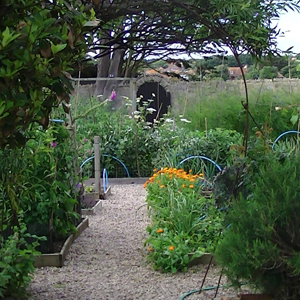 The locks open
The locks open
We end the day in silence. I have a blister on my thumb. I want to talk, drink, smoke, watch TV – anything to avoid feeling. But that’s not allowed. I’m here and I have to go through this. Silence. I feel a pressure on my chest and burst into a heavy cry. It is the first time that I have cried for my mother like this. My first chicken has come home to roost.
The next morning, I wake with muscle pain in my back and arms, but also with an indescribably calm feeling. In my daily catch-up with Michael, we look back on the previous day. He explains to me that negative life experiences are stored in the body in the form of muscle tension, which can block the flow of energy. You can remove those blockages by means of certain physical exercises, so that the energy will flow freely again.
I have always rationalised my mother’s death as being ‘the best thing for her.’ Feeling that I missed my mother, felt abandoned and was apparently not worthy of her, I hadn’t yet allowed. By expressing all my anger, not just on paper but also physically, the locks were opened and I was able to throw out what I had hidden away for far too long.
Then – I should have guessed – it’s my father’s turn. The sweetest, most caring father in the world, the father who I had to bury too early. Can I sit this one out?
Michael sees my hesitation. He explains to me that it’s not about condemning my father, but about trying to find out what negative patterns I have developed through his actions. So, obediently, I pick up my pen.
And as I write, it becomes clear to me that my dear father may have been protecting me too much, was always in control and never shared his real feelings with me. He never revealed anything about his experiences as an adolescent Jewish boy in Nazi camps. But as the youngest and most sensitive of the family, I picked up on his feelings nevertheless, and had nightmares about war that frightened me more than anything. In response, my father started to protect me even more, which (inadvertently) weakened me further. He also had high expectations of me, which held me back considerably as a young girl. Suddenly I understand where my tough behaviour comes from, and my drive for control and perfectionism. It’s all compensation for my deeper uncertainty. Bingo! I know what to do; the cushion and the bat are waiting.
Not thinking, but feeling
Now that all of our anger has been expressed, it’s time to start working on compassion and on forgiveness. The guided visualisations in which my ‘emotional child’ met my parents’ ‘emotional children’ are among the most special moments of the week. After this moving experience, I understand so much better what they went through and why they behaved like they did. I feel a deep compassion for both of them and forgive them. I now understand what the expression ‘from the bottom of my heart’ means. Because that is where I feel it, in my heart. And I feel that forgiving my parents, especially my mother, allows me to choose how to do things myself – consciously, differently.
The following days are filled with exercises and assignments from minute to minute. Light and dark are concepts that run through the Process like a red thread, and we practice how we can strengthen our intuition, how we can make choices and how we can feel within ourselves whether these choices will lead us to the dark or to the light.
There’s not a lot of time to think. Feeling, not thinking, is the point here. No sense remains untouched. Much is about returning to painful moments, events or decisions in our lives. Only when you have experienced it can there be room for something new. The method is a mix of scientific principles and spiritual insights; I recognise aspects of psychoanalysis, NLP, Buddhism and Gestalt therapy, amongst others. We also take part in impressive rituals, like the one where we let our demons go up in flames in an immense night fire under a starry sky. Magic! And to get us back in touch with carefree childlike joy, there is also a lot of room for humour and play. Bob Hoffman must have been a fun-loving guy, because we laugh, a lot.
Looking back
On my way to England, I found myself wondering why I hadn’t just arranged to spend a week visiting the moors. That would probably have done me good, and it would have been a lot cheaper. But (healthy cynicism apart), I realise that I am leaving here essentially different. Like a pruned tree that can finally let the light come back between its branches, all my senses sharp. It was fierce from time to time, but thanks to the skilled leadership of the facilitators, you are increasingly pushing your limits and doing things that you’ve never done before – out of the blue, just like that. That’s a very special thing about this Process; they know exactly how to push your buttons and your limits.
Working in a group was also better than I expected. It certainly wasn’t group therapy; everyone came up with their own problems and had their own unique Process, but the dynamic of the group works as a catalyst. It was very special to experience how a group of such different people can get so close in just eight days. We learned a lot from each other and are still in contact through a Google group, where we let each other know how we’re doing.
And how are you now, more than half a year later? After the initial euphoria subsided, I had a feeling of falling back into all my old patterns in one go. I was very disappointed. I called Michael and he reassured me that this is a very normal reaction. ‘Your dark side can’t simply be put away,’ he said. ‘You’ve got to keep working on that’. Like they say in homeopathy, things often get worse before they get better. And luckily I also have my toolkit, the collection of ‘tricks’ that we’ve learned to keep ourselves focused.
One of these is stepping into the role of ‘spectator’ and looking at your own behaviours, thoughts and feelings from a certain distance. Instead of resisting, I can now recognise and accept certain things. My ‘monster’ hasn’t returned; it goes back in its basket more and more often. I have developed more compassion – not just compassion ‘outside’ in the world, but especially to myself. I’ve become milder; I set the bar less high now, and that brings more peace. I’ve also learned to listen to my heart and that helps me make clearer choices. What I got in Seaford can be used in all facets of my life.
The Process is certainly not a quick fix – I’m not where I want to be quite yet. But because of the intense experience and supportive aftercare, it continues to work, subtly and constantly, like an unearthed treasure that I can keep drawing on for the rest of my life. The cliché of ‘getting closer to yourself’ has taken on real meaning for me, and the emptiness that I often felt has transformed into space. I have become a happier person.
You can read more about Roxane and her work in journalism and coaching on her website, here


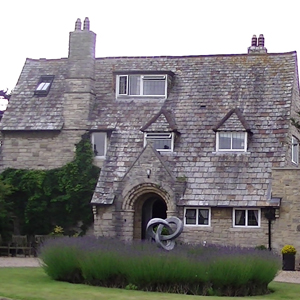
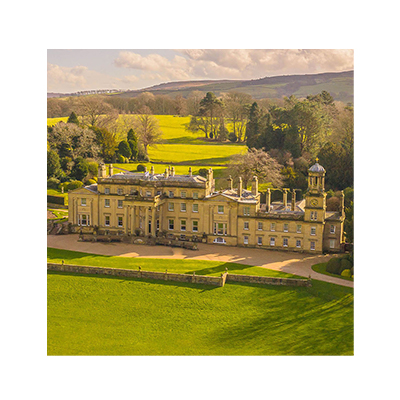

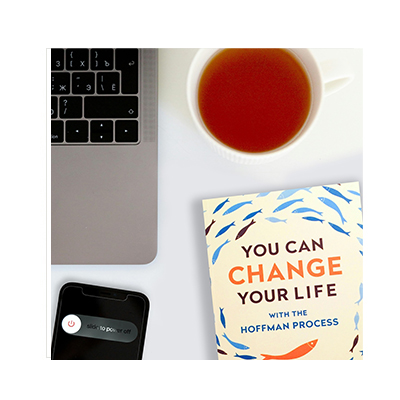
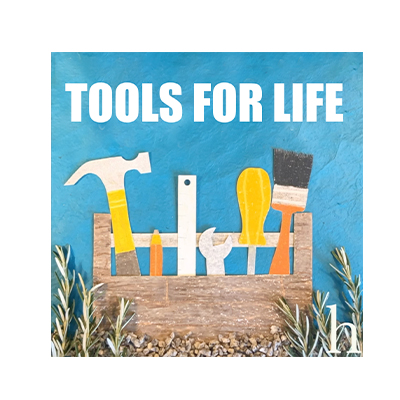
 Sign up to receive monthly newsletters from Hoffman
Sign up to receive monthly newsletters from Hoffman